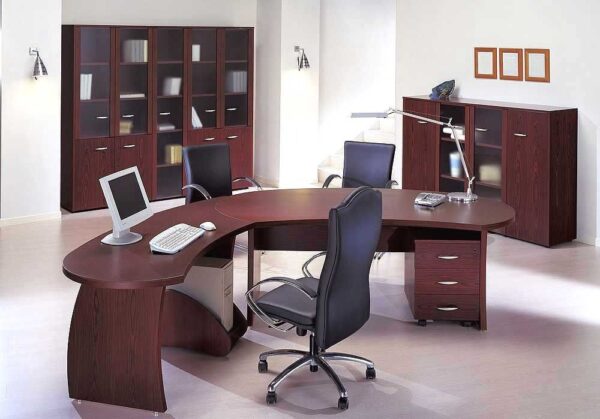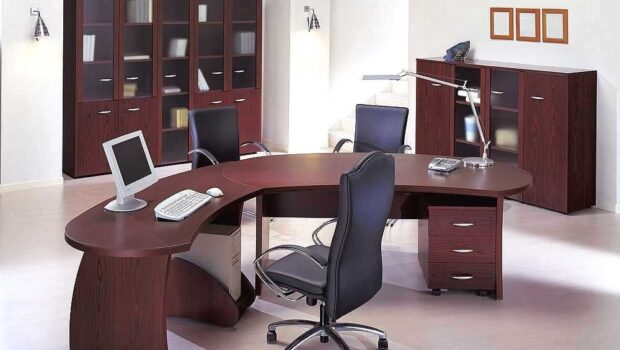How to Create a Collaborative Workspace with Office Furniture
Creating a collaborative workspace is essential for fostering teamwork, creativity, and innovation within an organization. Thoughtfully selected office furniture plays a significant role in shaping the environment and facilitating collaboration among employees. This guide explores strategies for leveraging business furniture to create a collaborative workspace that promotes communication, interaction, and synergy among team members.

Flexible Seating Arrangements
Modular Furniture
Incorporate modular furniture solutions that can be easily reconfigured to accommodate different group sizes and activities. Modular seating, tables, and storage units provide flexibility and adaptability, allowing employees to customize the workspace to suit their collaborative needs.
Mobile Furniture
Utilize mobile furniture such as rolling chairs, tables, and whiteboards that can be easily moved and rearranged to support impromptu meetings, brainstorming sessions, or collaborative projects. Mobile furniture facilitates fluidity and spontaneity in the workspace, encouraging interaction and collaboration.
Open Layouts and Zones
Open Plan Workstations
Design open plan workstations with low partitions or benching systems to promote visibility, accessibility, and communication among team members. An open layout encourages spontaneous interactions and fosters a sense of camaraderie and collaboration within the workspace.
Collaboration Zones
Create designated collaboration zones or meeting areas equipped with comfortable seating, writable surfaces, and multimedia capabilities. These dedicated spaces provide a conducive environment for team meetings, brainstorming sessions, and collaborative projects away from individual workstations.
Ergonomic and Comfortable Furniture
Comfortable Seating
Select ergonomic chairs and soft seating options that prioritize comfort and support during extended collaborative sessions. Comfortable seating encourages employees to engage in discussions, brainstorming, and problem-solving activities without discomfort or distraction.
Height-Adjustable Tables
Incorporate height-adjustable tables that accommodate different work styles and preferences, allowing employees to transition seamlessly between sitting and standing positions. Height-adjustable tables promote movement, flexibility, and collaboration by providing a versatile and ergonomic work surface.
Integrated Technology Solutions
Multimedia Furniture
Invest in multimedia furniture such as interactive displays, video conferencing systems, and integrated audiovisual equipment to facilitate virtual collaboration and communication. Multimedia furniture enables seamless integration of technology into collaborative activities and enhances connectivity among remote team members.
Power and Connectivity
Ensure easy access to power outlets, USB ports, and charging stations throughout the workspace to support the use of laptops, mobile devices, and other electronic devices during collaborative sessions. Reliable power and connectivity infrastructure enable efficient collaboration and information sharing.
Collaborative Tools and Accessories
Whiteboards and Pin-up Boards
Install writable surfaces such as whiteboards, chalkboards, or pin-up boards in collaborative areas to encourage visual thinking, ideation, and information sharing. Writable surfaces serve as canvases for brainstorming, sketching ideas, and capturing group discussions in real-time.
Collaborative Furniture Accessories
Provide collaborative furniture accessories such as movable dividers, privacy screens, and acoustic panels to create semi-private work areas within open spaces. These accessories help define zones, reduce distractions, and enhance concentration during collaborative activities.
Employee Engagement and Empowerment
Employee Involvement
Involve employees in the design process and solicit their input and feedback on furniture selection, layout, and functionality. Engaging employees in the decision-making process empowers them to take ownership of the workspace and ensures that their needs and preferences are considered.
Training and Support
Offer training and support to employees on how to effectively use collaborative furniture and technology solutions to enhance teamwork and productivity. Provide resources, guidelines, and best practices for conducting successful collaborative meetings and activities in the workspace.
Conclusion
Creating a collaborative workspace with office furniture requires careful planning, strategic design, and a focus on employee engagement and empowerment. By incorporating flexible seating arrangements, open layouts and zones, ergonomic and comfortable furniture, integrated technology solutions, collaborative tools and accessories, and employee engagement and empowerment strategies, businesses can foster a culture of collaboration and innovation within their organization. A collaborative workspace promotes communication, creativity, and teamwork, ultimately leading to increased productivity, employee satisfaction, and business success.
















